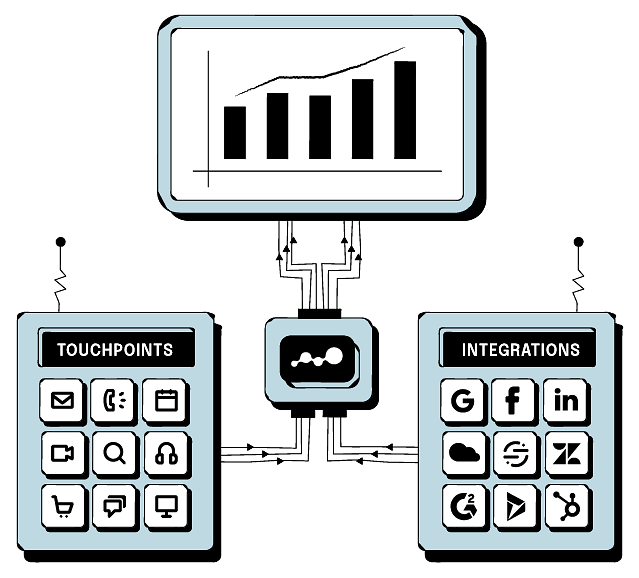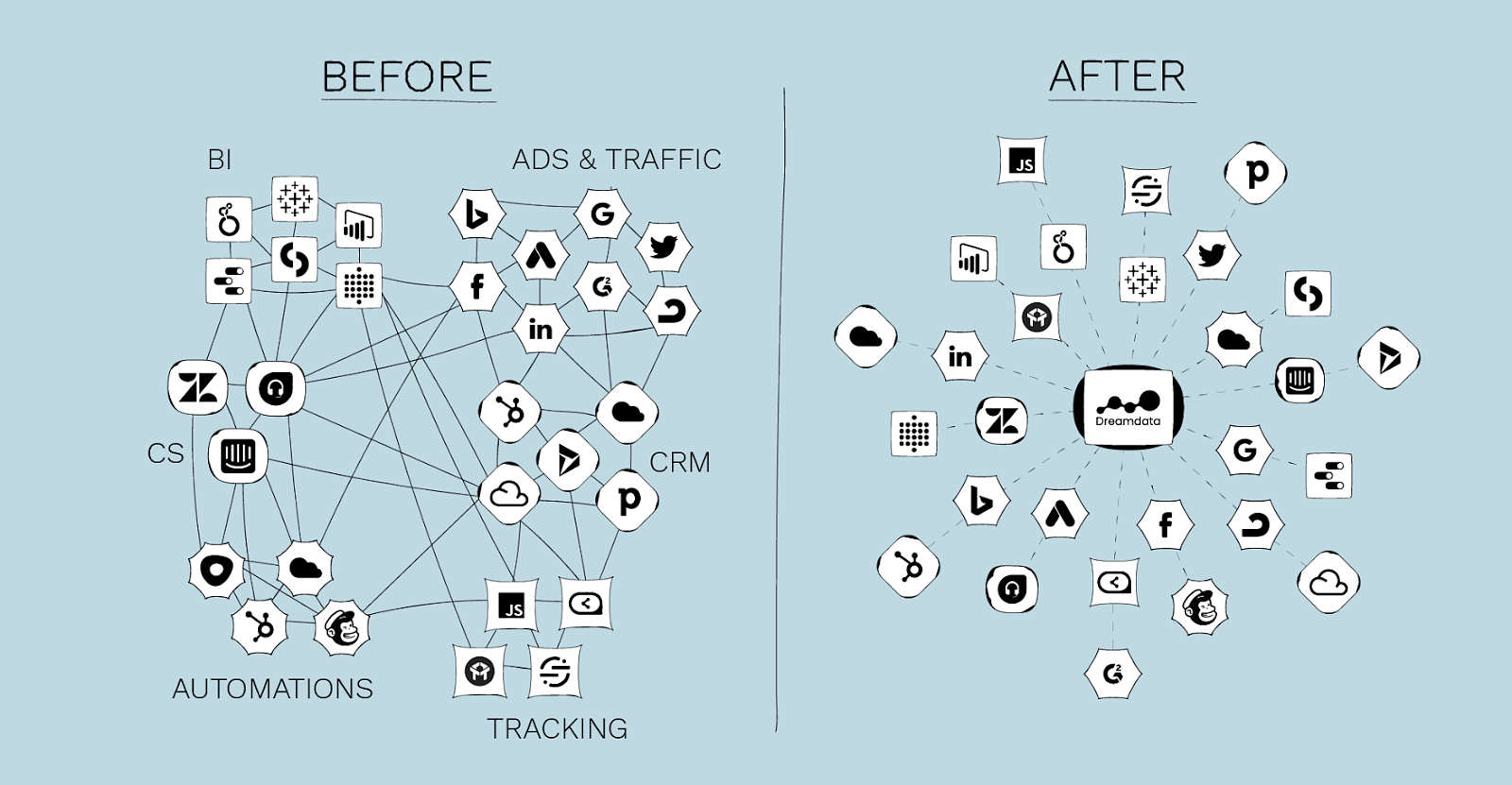
Optimise your marketing efforts and make your dream success a reality with data attribution
By Jim James, Founder EASTWEST PR and Host of The UnNoticed Entrepreneur.
Is attribution the silver bullet to understanding where your customers have been before they come to you? Jeremy Sacramento of Dreamdata was in the latest episode of The UnNoticed Entrepreneur to answer just that and talk about how their company helps entrepreneurs get noticed.
Image from LinkedIn
The Complex Journey of Today’s Customers
Before getting into the meat of attribution, it’s essential to understand the customer journey — the journey from when a customer first sets off to buying a product of your type and eventually becoming a buyer of yours or not.
This customer journey is becoming more complex. Individuals are spending more time browsing an overabundance of content. They interact with different brands on multiple devices and channels (e.g., LinkedIn, Facebook, Google, and YouTube).
Dreamdata is a platform focused on the business-to-business (B2B) journey. It’s a journey with an added layer of complexity: Multiple users representing their company are buying over a prolonged period.
Based on their data analysis, the average B2B customer journey takes 192 days or over six months. There’s a lot of interaction taking place with different brands on review sites and with blog posts. They’re trying to unpack all that data and make sense of what’s happening there.
How Dreamdata Helps
Their goal at Dreamdata is to move off Microsoft Excel and try to pick up all those data points.
Entrepreneurs, startups, and enterprises use an increasing number of tools — from email automation and advertising platforms to podcast service providers — sitting on different data silos, which need to be pulled out, pulled together, and cleaned. Doing this allows them to look at the same customer doing all these different touches, including those coming from web analytics.
Dreamdata gets all these data together and maps it out until you see where your customers are and know how they’re interacting at the individual and account levels.
Suppose you send out email newsletters, run a podcast, and produce a bunch of blog posts. In that case, it will help you understand which is working and which isn’t. Essentially, they’re helping you optimise your activities and discover which has generated an outcome.
Image from Dreamdata
Attribution is fundamentally linking your inputs (i.e., your marketing efforts) with revenue and business outcomes. It’s moving past the simple traffic or conversion metrics. It’s about going further down the funnel to determine if an input is generating revenue — which is especially helpful if you have a product you’re selling.
For instance, you may find that your Google ad campaign has brought in 20 customers, whereas the other channel has only brought in two. Now, you’ll know where you want to invest your money.
On GDPR Compliance
Dreamdata has been getting asked about tracking and General Data Protection Regulation (GPDR) compliance, especially during the wake of Google Analytics breaching GDPR compliance by sending data from European countries to the US.
Like many other attribution platforms, they use first-party data, which is consent-based cookies. It’s when someone clicks on the “Accept” button on the cookie banner that pops up on a website. The data that they gather always resides in the European Union.
Their platform is GDPR-compliant by default — and it’s an aspect that Jeremy is delighted about because they at Dreamdata know that this compliance is a critical subject matter for their prospective customers.
Gaining a Competitive Edge
As previously mentioned, the customer journey has become more complex with the overabundance of content across several channels. Customers are spoilt with choices across all spaces.
They can spend time trying online-based products and get free offerings in return. They can spend time researching and going to review sites, reading blogs and comparison articles, listening to podcasts, and watching webinars and YouTube videos. They can spend all their time doing these before coming into contact with anyone.
Image from Pexels
When you piece together the customer journey and know what’s working and what isn’t, you’ll see that all this is mostly happening in the digital space. And it’s fundamental to any business owner or leader to know what’s happening — and whether what’s happening there is working — so they can gain that competitive advantage and do things efficiently.
About 60% of the customer journey happens before the actual interaction with an individual takes place. And this is what they at Dreamdata are helping to clarify.
Gathering Data from Websites You Don’t Have an Account On
Some of the data you need is on the sites you have an account on, like YouTube or Facebook. Some, however, are on channels where you don’t have an account or a campaign running on, like Glassdoor or Trustpilot.
There are several ways that customer data on these channels can be tracked. However, it’s vital to know that attribution and customer journey mapping is not a silver bullet — they can’t give you 100% clarity. It’s simply impossible. But where those touch points are recordable, you can have an Urchin Tracking Module (UTM) parameter or a text code added to the end of a Uniform Resource Locator (URL) that will help track where the traffic is coming.
You want to ensure that wherever you have links coming to your site, there are these parameters. Otherwise, you need to have accounts and find ways to pull data out of those systems.
Using Dreamdata to Optimise Your Marketing Efforts
Do you have to be clever to use Dreamdata? The answer is no.
However, Jeremy clarified that this question has two layers; one is the technical side. Setting it up presents some level of complexity. But they do have a free offering that has become sort of self-service entirely. At the click of a button, you can do your tracking.
The other layer you must consider is that the more tools you have, the messier your data will be and the harder it will be to track and connect them all. This is dependent on each use case.
But, hypothetically assuming that everything’s connected and in place, you don’t have to be that marketing-savvy to use and understand data attribution in Dreamdata. For him, this situation is better described as a culture shift.
A lot of people aren’t used to working with metrics that are revenue- and pipeline-based. People are used to working with traffic and the number of visitors, and bounce and conversion rates. And when you start introducing your marketing team or personnel to revenue-based metrics, be prepared to grapple with the challenges that come with this kind of shift.
Screengrab from Dreamdata
At Dreamdata, you simply need to integrate your accounts and give access to data from your other platforms. Then, it will automatically pull data and put that into the dashboard. This helps save you time linking all those Excel processes once the integrations are in place.
The tech stack you’ve connected with Dreamdata and the dashboard will run and model the data for you. You’ll have a good interface, which you can use to customise your campaigns and channels and put your money where it should be.
At its most fundamental, attribution means connecting your marketing efforts and everything you do to sell your product with business outcomes and revenue.
In practice, attribution means assigning credit to those touches that are happening. When a user clicks on a paid ad, reads your newsletter, or watches your podcast, you’re assigning credit so you can better understand where the better and weaker performers are; which ones you should cut and which you should scale and repeat.
Ultimately, it helps you understand your revenue streams better.
The Kind of Data You Can Get
When you pull all the data of your customers, you’ll get their names and addresses; for B2B, you’ll also get the company. And this happens as soon as they identify themselves through a form submission. For instance, if a customer signs up for your newsletter and you’ve asked for their name, that data will get channelled into their customer profile.
That data will be anonymous for as long as it needs to be, given today’s privacy issues. But you can get data enrichment — an enriched customer profile with all the relevant details you need to prove your marketing and sales and build audiences.
Image from Pexels
With Dreamdata’s freemium model, you can sign up and make your marketing and advertising strategies optimal. This is one of their three pricing tiers, but it has limitations on the number of integrations you can make.
They also have a team offering with some more add-ons. The last one is their business tier, which targets the bigger businesses.
Getting Dreamdata Noticed
Dreamdata is running paid aids principally on Google but also on LinkedIn (As a B2B company, they know that their audience is on LinkedIn). Apart from that, they’re also running email campaigns and doing blogs and YouTube videos.
Today, there’s also a thing called dark funnel marketing, where you can get exposure to a brand without an actual touch taking place.
In their case, they do this by having employee advocacy that encourages social selling. Their people can use LinkedIn to try and generate demand for Dreamdata. Their company has a culture where you’re encouraged to spend time on LinkedIn, get your posts up, and help expose the brand to the people lurking around their employees’ networks.
From paid to organic strategies, they’re trying to cover as much space as possible.
To learn more about them, visit www.dreamdata.io.
This article is based on a transcript from my podcast The UnNoticed Entrepreneur, you can listen here.
Cover image by rawpixel.com on Freepik






